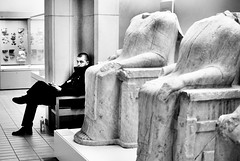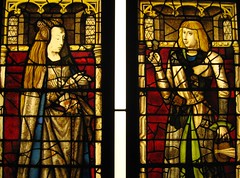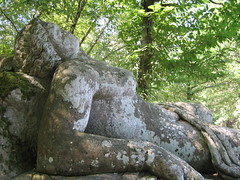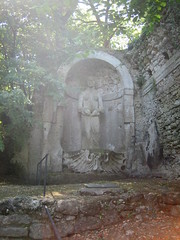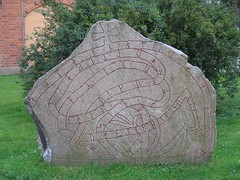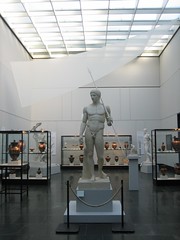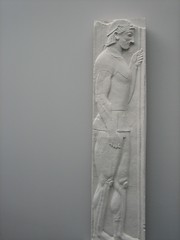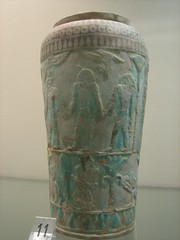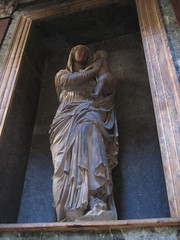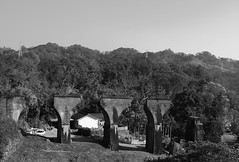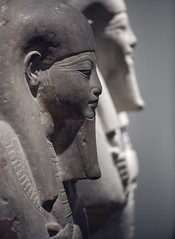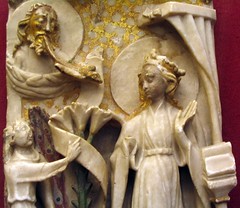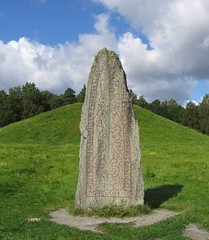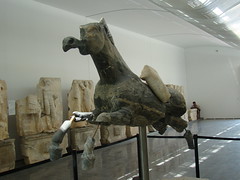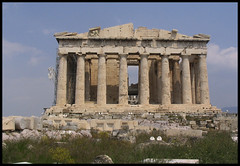Whether they’re true, just good stories or somewhere in between, we all love a juicy myth or legend. Here are some of Britain’s best and the places to experience them.

Tintagel, Cornwall
Head to the wild and unspoiled cliffs of Tintagel to discover the mythical birthplace of King Arthur. It was medieval historian Geoffrey of Monmouth who first proposed the theory that Arthur was born here and that the wizard Merlin lived in a cave nearby. Ruined Tintagel Castle, set on the blustery cliff top, is a wonderfully romantic setting from which to explore the legend.
- Find out more about Cornwall
Robin Hood, Nottingham
We all know this one. Or do we? The outlaw hero and expert archer who robs the rich to feed the poor is about as English as tea and crumpets. But surprisingly little is known about the man himself. So don your suit of green, assemble some merry men and head to Nottingham to see if you can discover this elusive chap yourself. You might find him at the Major Oak, the ancient tree in Sherwood Forest rumoured to be his hideout.
- Find out more about Robin Hood

Glastonbury, Somerset
Glastonbury is knee-deep in supernatural associations. It stands at the junction of ley lines, the supposed mystical motorways of spiritual energy and is said to be the final resting place of King Arthur. Many believe a young Jesus Christ visited the site and that the town’s Chalice Well is the hiding place of the Holy Grail. A visit from Jesus is not as far fetched as it sounds - Joseph of Arimathea, a relation of Mary, owned a mine in the area.
- Discover more about Glastonbury
The Loch Ness Monster, Loch Ness, Scottish Highlands
Few things shout Scotland louder than the mythical monster that skulks in Loch Ness, Britain's longest body of fresh water. Sightings of Nessie have declined over recent years and despite high-profile submarine searches and much-disputed photographs, the beast seems quite content to maintain its low profile. Don’t be disheartened if you don’t catch a glimpse of Nessie, though. The loch itself is beautiful enough and the Highlands have sufficient mystery and magic for anyone.
- To learn more about Loch Ness, visit our Loch Ness destination guide

Rosslyn Chapel, Roslin, Scotland
This medieval church outside Edinburgh has long-standing links to the Knights Templar and Freemasonry. Carvings, rich in symbolism, sprout from every surface in an astonishing ‘essay in stone’ and many believe the Chapel is the repository for the Holy Grail – as speculated in The Da Vinci Code. Whatever you believe, Rosslyn’s forest of carvings is inspiring, mystifying and truly unique.
- To find out more about Rosslyn visit the chapel website
Jack the Ripper, East London
The serial killer known as Jack the Ripper was scarily real and the fact that 5 London prostitutes were brutally murdered in 1888 is beyond dispute. More mysterious is the identity of the killer with suspects ranging from artist Walter Sickert to author Lewis Carroll. Tour the fog-cloaked streets of East London to review the evidence for yourself. While Whitechapel retains something of the night, by day it has a great mix of hip boutiques, designer bars and, on Brick Lane, curry houses as far as the eye can see.
- Discover London with our destination guide

St Michael’s Mount, Cornwall
St Michael's Mount at Penzance is a small tidal island just off the coast of Cornwall. Legend has it the Mount was the work of Cornish giant Cormoran who built a fortified home from where he could terrorise the locals living in the coastal village of Marazion. But one night, local lad Jack crept over to the island and dug a hole disguising it with straw. When Jack woke him, Cormoran blundered into the hole never to escape. Walk up St Michael's Mount, see Jack’s hole and put your head against the nearby rock. It is said you can still hear the giant's heart beating.
- Learn more about Cornish legends at Visit Cornwall
Stonehenge, Salisbury
Stonehenge is the most famous megalithic (literally meaning ‘big stone’) monument in the world. Dating back an amazing 50,000 years, it’s drawn visitors for literally millennia. A place of ritual sacrifice and sun worship or a massive calendar? Nobody really knows its purpose, but no one who has ever been there will deny, it is truly awe inspiring.
- Get more information on Stonehenge

Wookey Hole Witch, Wookey Hole Caves near Wells
Deep within the dank, underground caves of Wookey Hole lived the fearsome Wookey Hole Witch. Long ago, the villagers of Wookey implored the Abbot of Glastonbury to send a protector against this malevolent hag. Enter Father Bernard, Benedictine monk and crack exorcist. Bernard scooped up some water, quickly blessed it and threw it over the witch turning her to stone. You can still see the witch’s petrified form deep in these extraordinary caves.
- Find out more about the Wookey Hole Witch
Cerne Abbas Giant, Cerne Abbas near Dorchester
A gigantic figure etched in a chalk hillside guards the village of Cerne Abbas near Dorchester. Naked apart from a huge club he’s certainly an arresting sight. But his true meaning and even his age are in dispute. Is he an ancient fertility symbol, a cheeky 17th-century joke or something else entirely? The only time he’s been clothed is during World War II when he was disguised to prevent the enemy from using him as an aerial landmark.
- Find out more about the Cerne Abbas Giant









